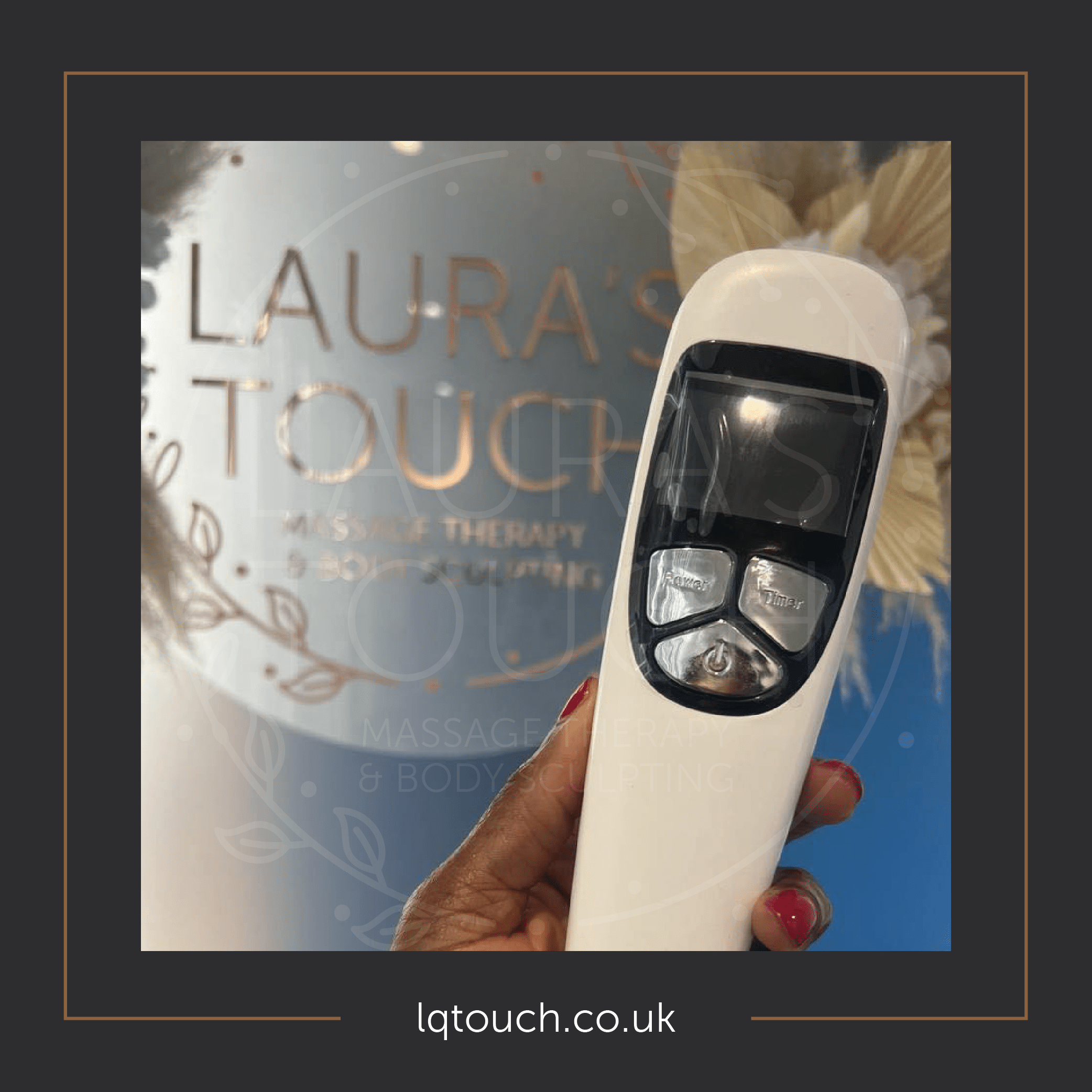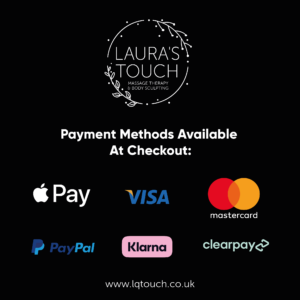Cold laser therapy, also known as low-level laser therapy (LLLT) or photobiomodulation (PBM), is a non-invasive treatment that uses low-level lasers or light-emitting diodes (LEDs) to stimulate cellular function and promote healing. Some potential benefits of cold laser therapy for post-surgical healing include:
- Reduced Inflammation: Cold laser therapy has been suggested to help reduce inflammation by modulating the immune response and decreasing the production of inflammatory mediators. This can be particularly beneficial in the post-surgical phase to minimize swelling.

Before and after photo of a post 360 tummy lipo client
- Pain Management: Cold laser therapy may have analgesic (pain-relieving) effects by influencing nerve activity and reducing pain signals. This can be advantageous for managing post-operative pain without the need
for medications.
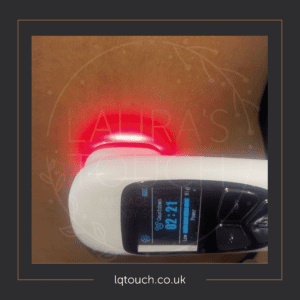
- Cold Laser Therapy treatment used to treat back pain
- Accelerated Healing: Some studies suggest that cold laser therapy may enhance the healing process by promoting the production of adenosine triphosphate (ATP), which is essential for cellular energy. This boost in energy may help cells function more efficiently and accelerate tissue repair.
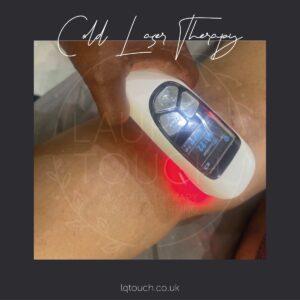
Cold Laser Therapy
- Improved Blood Flow: Cold laser therapy has been proposed to enhance microcirculation and blood flow. Improved blood flow can enhance nutrient and oxygen delivery to tissues, fostering a more optimal environment for healing.
- Collagen Production: The therapy may stimulate the production of collagen, a key component in connective tissues. This can be crucial for the formation of scar tissue and the overall structural integrity of the healed area.
- Minimized Scar Formation: By promoting proper wound healing and collagen production, cold laser therapy may contribute to minimizing scar tissue formation and improving the cosmetic outcome of surgical procedures.
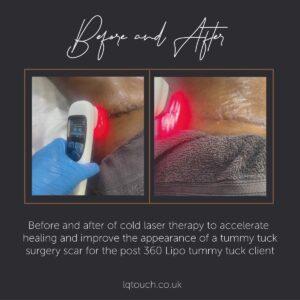
Before and after of cold laser therapy treatment to accelerate healing and appearance of a tummy tuck scar
- Non-Invasive and Low Risk: Cold laser therapy is non-invasive, painless, and typically associated with minimal side effects. This makes it a relatively low-risk option for post-surgical rehabilitation compared to some other interventions.
Additionally, individual responses to the therapy may vary, and its effectiveness may depend on factors such as the type of surgery, the specific condition being treated, and the timing and frequency of the laser sessions.



